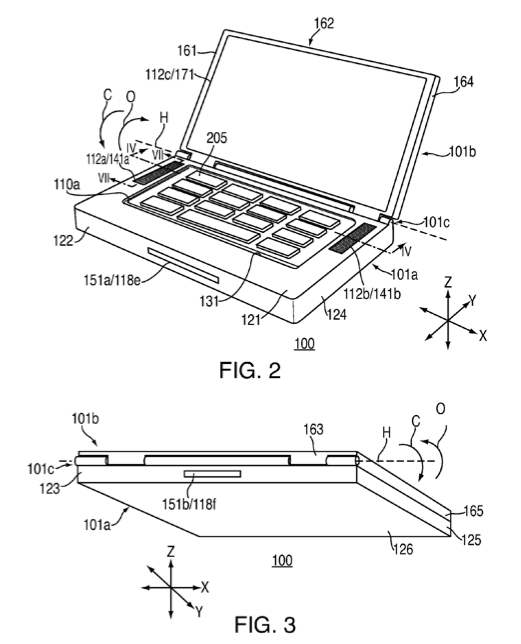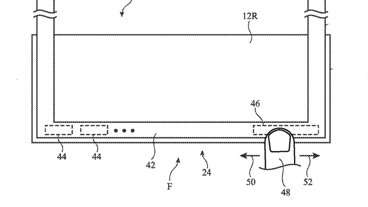As computers become faster and more powerful, power consumption and heat generation can also become greater. Four Apple patent applications unveiled this week, and filed for on Sept. 29, 2008, aim to address those issues.
"Heat dissipation is an important consideration in the design of such electronic devices," Apple's applications read. "If this heat is not adequately dissipated, the electronic components may fail and/or cause damage to the electronic device."
The first application, entitled "Methods and Apparatus for Cooling Electronic Devices Using Flow Sensors," would detect the flow of air through a portable device, such as a MacBook Pro. Such a device could detect the velocity of airflow, or a change in that velocity, and make adjustments to the system accordingly.
Based on the airflow of the device, the system could adjust fan speeds or computing power to ensure the device does not overheat.
The second application, entitled "Methods and Apparatus for Cooling Electronic Devices Through User Interfaces," would use open ports on the sides of a computer to increase airflow. Input/output ports such as USB, Ethernet and FireWire would be used to increase the flow of air into the device.
Additionally, a system could be designed so that the ports were positioned for ideal cooling of the hardware.
The third application, "Methods and Apparatus for Cooling Electronic Devices Using Conductive Hinge Assemblies," describes a hinge that would connect to an electronic component and a second housing intended to cool the computer part. The hinge would be configured to dissipate heat by transferring the heat generated by the electronic component to the second housing.
That second housing could include a heat spreader that would allow it to more efficiently dissipate the heat and cool the device.
Finally, "Methods and Apparatus for Cooling Electronic Devices using Thermoelectric Cooling Components" describes a method of cooling that would employ the "Peltier effect." Named for French physicist Jean-Charles Peltier, the effect defines when an electrical current runs through the junction of two different metals. When electrons flow from a region of high density to a lower one, it allows them to cool.
The application describes a "solid-state cooling mechanism" that would employ two sides to transfer heat away from the machine and help dissipate it.
"A current may be applied across a portion of thermoelectric cooling component… such that heat may be transported away from first surface... to second surface… of thermoelectric cooling component," the application reads. "For example, when a current of 100 milliamperes is applied across a portion of thermoelectric cooling component… (it) may create a temperature difference in the range of between 5 Celsius and 10 Celsius between first surface… and second surface."
 Slash Lane
Slash Lane




-xl-m.jpg)


-m.jpg)






 William Gallagher
William Gallagher
 Malcolm Owen
Malcolm Owen

 Mike Wuerthele
Mike Wuerthele


 Thomas Sibilly
Thomas Sibilly
 Wesley Hilliard
Wesley Hilliard








40 Comments
That's pretty cool. Especially with the ipad coming out. Is this an improvement over the fans (in terms of batter life) or is this just a way to get rid of the fans and make the device smaller. Since it is showing as a notebook patent it seems like its an extra cooling for the laptop, but obviously iPods and iPads would need this a lot more then a notebook.
See now I was under the impression that Apple was not looking to improve cooling efficiency at some point, some time.
Learn something new every day.
See now I was under the impression that Apple was not looking to improve cooling efficiency at some point, some time.
Learn something new every day.
Yeah. I learned about thermocouples ages ago as a temperature sensor, but never even thought about applying a current to use this as a method of cooling. I wonder about the power efficiency of Peltier cooling vs traditional fan/air flow cooling? Obviously this is much more practical in compact electronics such as the iPad or iPhone, but is a fan more efficient in something slightly larger like a MBP?
15 key laptop? Nice!
No more mentions on a liquid cooling system then?
You can learn more about the Peltier Effect by going to
http://www.heatsink-guide.com/peltier.htm
Makes sense to look into methods of cooling future MBP and other Macs because heat will become more of a problem as processors become more powerful and produce more heat. From what I read, it may be possible to actually integrate a Peltier device into a processor.